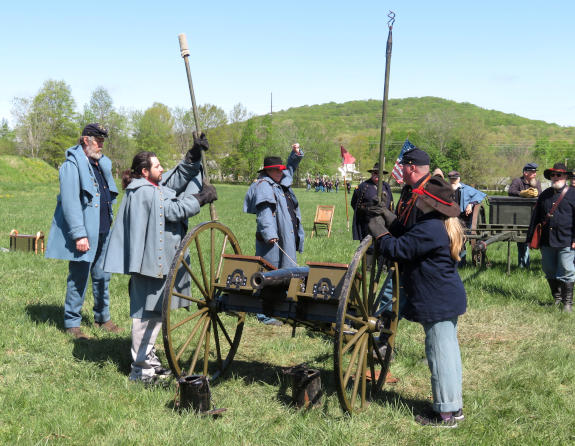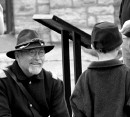NEWS OF 150 YEARS AGO
July/August 1861
From The Missouri Democrat, Thursday, July 11, 1861.
WAR NEWS!
Col. Sigel’s Engagement with the Rebels on the 5th.
FULL PARTICULARS.
SIGEL’S FORCE 1,100 TO 1,200 MEN.
REBEL FORCE 6,000.
HARD FIGHTING.
PRISONERS TAKEN.
THEY REPORT A LOSS OF 250 MEN.
LOSS PROBABLY GREATER.
Sigel’s Loss Eight Killed and Thirty-Five or Forty Wounded.
RELIABLE PARTICULARS.
A special messenger arrived this evening on the Pacific railroad train, bringing dispatches from Col. Sigel to Col. Harding, at the arsenal.
The following extract of Col. Sigel’s dispatches were written out for us at Rolla.
The report, it seems, tells a glorious tale for Col. Sigel. He has made a wonderful fight and gained a great victory.
The rumors that Colonels Brown and Salomon are killed, are all unfounded.
CAMP SWEENY, July 10, 1861.
Editors Missouri Democrat:
I write in haste, to give you the substance of the reports of an engagement between Colonel Sigel’s command and the rebels. A messenger just arrived gives the following:
On the morning of the 5th inst., Col. Sigel, with a portion of his regiment, a part of Col. Salomon’s, and the artillery belonging to his command, consisting of about 1,100 to 1,200 men, attacked a body of traitors, 6,000 strong, under Rains and Parsons, about seven miles east of Carthage, on the prairie. Many of the enemy were mounted, and they had five pieces of cannon.
Col. Sigel began the attack about 9½ o’clock, A. M., with his battery, breaking the center twice and silencing the enemy’s artillery after one and a half hour’s firing. The rebels had three flags, one of the State of Missouri which was left unharmed, the two others were secession flags, and were twice shot down, when they were raised no more.
The enemy attempted with their cavalry to outflank our troops and cut off our baggage but Col. Sigel made a retreating movement, keeping up his firing all the while, and ordering the baggage train to advance. The rebels then attempted to cut off his communication with Carthage, and so posted their cavalry, but our artillery was placed so as to take them at a cross fire, and made sad havoc among their ranks, which opened the road, and Sigel fell back upon Carthage, the rebel cavalry harnessing his flanks up to the town, where another stand was made, the traitors being in possession of the town. Col. Sigel surrounded it, throwing his shot and grenades right into the enemy’s cavalry stationed in the town, using his infantry to great advantage. Attempting to reach a neighboring woods to prevent the use of the cavalry, the traitors made the most serious attack, and the bloodiest part of the battle was fought there.
The rebels were completely routed and forced to withdraw their forces. Col. Sigel then fell back upon Mount Vernon, where he could be supported.
Some captive officers taken at five o’clock, P. M., reported a loss of nearly 350 men on their part. As the hardest part of the fighting was done subsequently it is conjectured they must have suffered a loss of 500 men killed; 45 were taken prisoners. Our loss was 8 killed and 35 to 45 wounded and missing. Among the wounded was Capt. Stroudman.
Col. Sigel’s artillery, ten pieces, fired 95 shots each during the day.
Such a battle! Oh, ye boasted chivalry! Where are ye now? Echo answers, “where?”
A streak of light begins to let upon us. We will positively advance towards Springfield on Friday, A. M.



